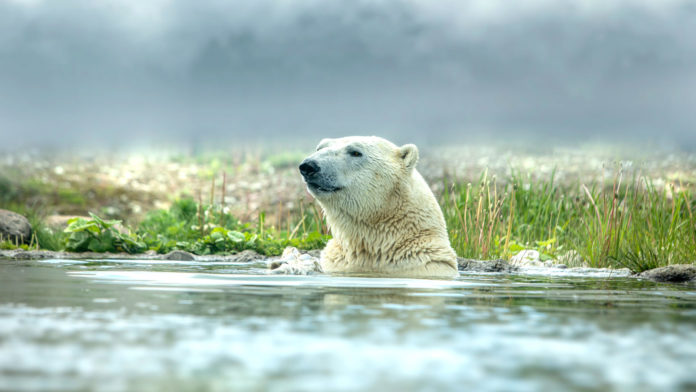Polar bears have become a symbol of the dangers of climate change in the Arctic. Understanding their movement patterns and behaviour, even through constant winter darkness, helps us see how they are responding to changing sea ice.
The trouble is that we aren’t using ideal ways to track them. But researchers Polar Bears International, York University, and 3M believe they have developed a better and non-invasive way to do it. Their innovation helped them win the Gizmodo Science Fair with a tracking device inspired by nature, sticking to their fur like a burr.
They hope to replace bulky satellite collars, which only work on adult females; collars easily slip off of males whose necks are just as wide as their heads, and they don’t grow with young bears and can become dangerously tight.
They also hope to replace GPS ear tags, which are permanent and require a small surgery to implant under the skin.
For the burr-on-fur strategy to work, the tracking unit will need to withstand some rough conditions. Polar bears are built like a tank, rolling and barreling through obstacles that might get in their way. They regularly go out on sea ice and live in extreme cold. They hunt and explore caves, and they swim long distances through salt water.
In other words, there are lots of ways that a device could fall off or get damaged.
To narrow down the possible designs, the team began their work by testing on faux fur and fur swatches provided by the US Fish and Wildlife Service. Two designs emerged as the leading prototypes: the crimp plate and the tri-brush.
“One is shaped like a pentagon, with a tracker box on a small platform. The fur is pulled through copper tubes, which researchers then crimp to hold the fur in place,” explained BJ Kirschhoffer, director of conservation technology at Polar Bears International, in a press release.
“Another is the tri-brush attachment, which looks like a metal triangle with strong pipe-cleaner like brushes on each side that tangle into the bear’s fur.”
Each design carries basic GPS tags to transmit tracking information back to researchers. They are non-toxic and non-permanent, designed to fall off seven months to a year after being attached.
The team has been testing these designs with zoos and aquariums, allowing them to monitor their trackers and figure out what the bears are doing when they fall off.
“Already, the zoo studies have yielded important information leading to both deployment and design modifications,” added Kirschhoffer.
“For example, staff and animal care teams identified the middle of the shoulder blades as the best placement for a tag. Zoo findings also led to a slightly larger footprint for the crimp plate tags and a plastic cover for the tri-brush tags, providing more protection.”
The updated burr-on-fur designs were then tested on wild polar bears in western and southern Hudson Bay. The tags transmitted tracking data on average for 53 days, and up to 114 days at the longest end of the range. The team hopes to ultimately get up to 270 days of data, but even as little as 30 days of tracking would provide important information.
“Understanding the kinds of habitats that they use on the ice and onshore is essential for identifying critical habitat under endangered species legislation,” said Gregory Thiemann, associate professor of biology and environmental studies at York University, in an interview with Gizmodo.
“It’s important to understand migratory routes, where bears are moving in different seasons.”
Climate change is having a devastating impact on Arctic sea ice, which polar bears need to survive. Hopefully these trackers will help researchers pinpoint the habitats that polar bears rely on, providing a map for conservation that translates into action.




































